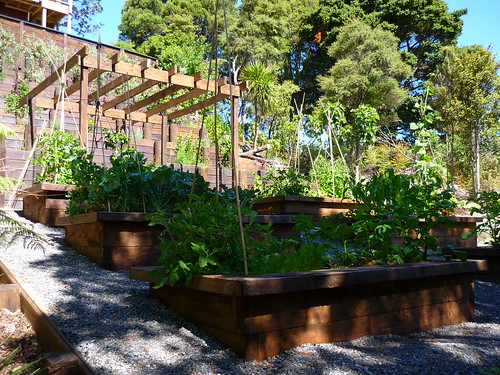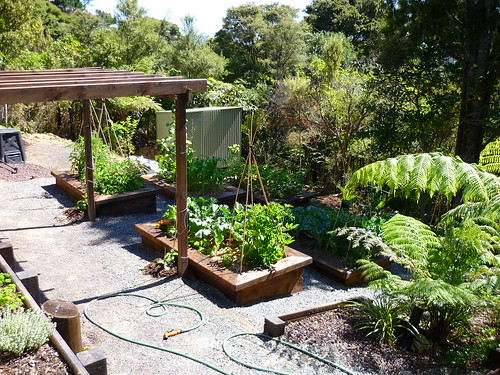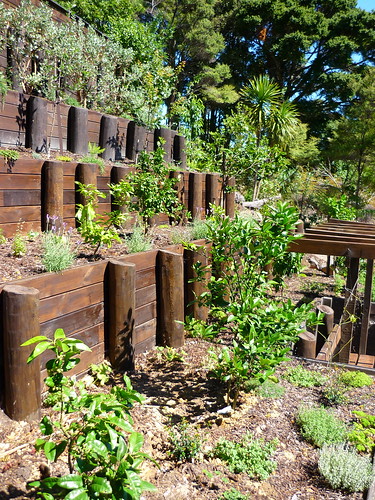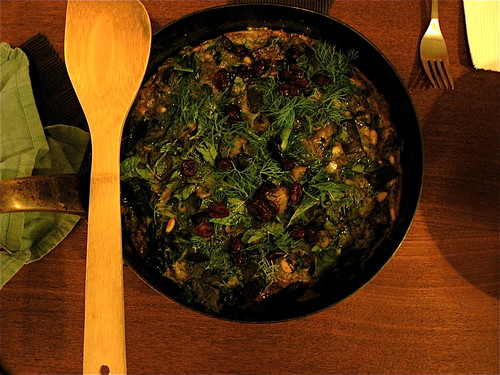The day we left New York was a Sunday, and after a week of eating up and down the American East Coast food chain and checking out the full spread of NYC cuisine, it felt almost like a parting gift from the NY Times gods on high that their Sunday edition magazine section was entirely about food and aptly named "Food Fights". The magazine included some interesting articles on tipping, one about kosher meat and a very long open letter by Michael Pollan (post-productivisms poster boy)
to the next president of the United States, Farmer in Chief, as he so optimistically called him.
In the article Pollan argued, pleaded and cajoled for the next president (now we know him as Obama) to rethink the American food system on a grand scale. Pollan called for Obama to:
- move away from oil dependent productivist farming practices that produce mountains of food and drive down the price of food at the peril of the climate, energy independence, American health, farming ecologies and rural communities everywhere around the world
- to move towards "post-productivist" practices and systems based on "alternative" food systems: organic, local, pasture based, humane and above all based on solar power not carbon energy.
The 8 web page long article, Pollan acknowledged that while the industrial food system is indeed a marvel it is inherently unsustainable, and called out the ill-logic of seperating protien production from grain, advocating a move back towards poly cultures rather than subsidised mono-cultures that don't even go into "food" production but low quality calories, animal feed and biofuels. He railed against globalised food economies and warned they are coming to an end. He advocated supporting municipal composting and "perrenialising" agriculture, through solar based grass fed livestock production aimed at reducing meat production and consumption. Although by Pollan's own admission whether or not such a food system would be capable of sustaining the American population is up for debate. Yet Pollan is self-assured it's worth a try, believing that organics can produce same amounts of food, but requires people to move back to the farm. Yes, he supports re-ruralisation and the re-education that would be required to achieve this new American food system (a statement that conjured horrifying images of the Khmer Rouge or China's disastrous past). He advocates decentralised local regional food systems, grants to support farmers markets, reduced food processing regulations and the introduction of local meat inspectors. Pollan believes there should be a strategic grain reserve and a regionalised food procurement system which if the Republicans haven't had enough of smearing Obama as a socialist by now, they surely will be reinvigorated to do so if Pollan's manifesto was ever to be implemented. Pollan also requests the creation of a Fedaral definition of food, which makes "real food" exempt from sales tax. In Pollan's utopia, food stamp cards would double in value when used at farmers markets. We would educate children a la Alice Waters with edible gardens and oil used in the production of food would be on labels. Finally barcodes would include stories of the full production process when scanned.
Well golly!
Now I don't disagree with Pollan that there are some serious problems with the American food system (and this does not in my view mean by extension the whole world's food system, although many people seem to think it does). The noticeable lack of fresh fruit and vegetables and indeed the cost of anything green was most surprising to Hock and I on our visit. A bowl of fruit salad was roughly double the price of a bacon and egg sandwich, which left me with no doubt that their's is a fucked up food system indeed. But does it require radical change?
A small insight into the minds of American food radicals came to me on a visit to the Museum of Natural History. (I love Natural History museums. I love looking at rocks and species of bugs stuck to pin boards and the like). The Museum had some pretty spectacular exhibitions, especially the planitarium and whole space area in general. Some big money had obviously gone into funding the space section, as opposed to say the "agriculture" area which presented a uniquely linear, mid-century/ modernist/ productivist world view of agriculture. I'm sure most visitors to the museum don't even notice the exhibit situated in a corridor on the way to the far more sophisticated presentations on evolution and ever-intriguing rocks. Instead the exhibit is so outdated that it could be considered an artifact unto itself, with its dusty old cabinets and Fifties fonts invoking a kind of sentimentality for the good old days of Elly May and Uncle Buck, apple pie and soda pop. Harking back to those pre-diabeties, pre-obesity epidemics days, long before the term "food dessert" could be understood in urban terms and when corn was simply the best thing before sliced bread. Perhaps that is why they keep the dusty lined cabinets which detail agricultural development as a linear process that moves from "primeval forest dweller" (note dark skin colour) to settlement and high production (note white farmers, no slaves present in farm scenes). Maybe they keep it for posterity's sake, or maybe its just because Michael Pollan lives in Berkley.
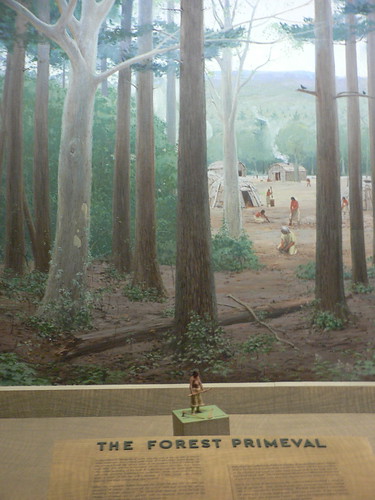
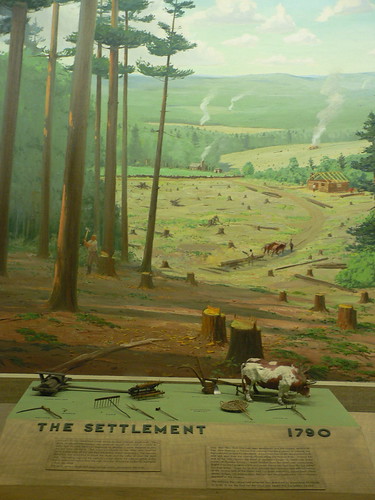
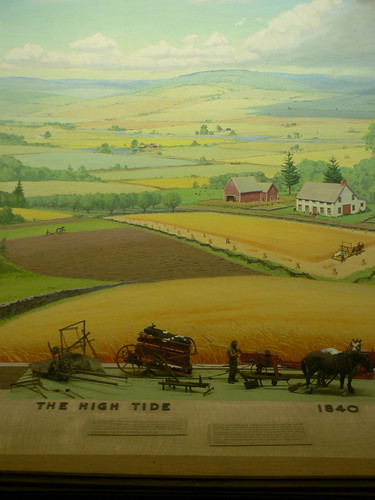
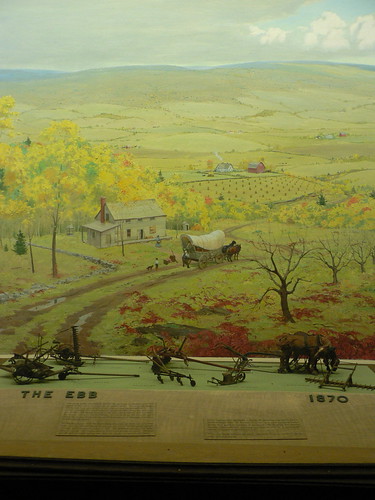
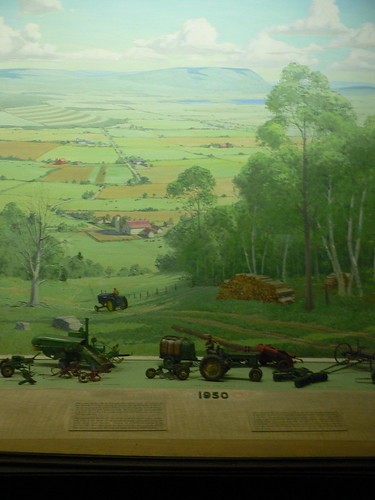
I was also much amused by the diagram on soil fertilisation, which depicted in no uncertain terms the benefits of agrochemicals. The smaller grassy mound's title reads "unfertilised" with the large towering grassy mound reading "fertilised". It is quite clear from this and the other exhibits that more is certainly more, bigger better.
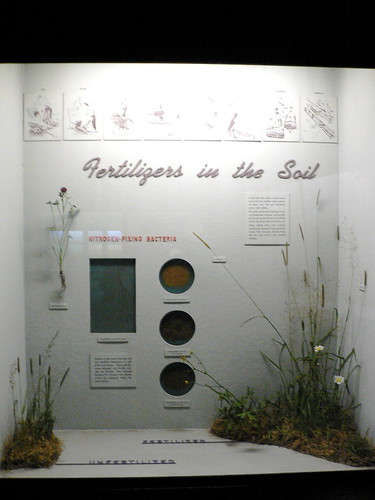
Which is pretty much where that the diagrams end. The museum's outdated "agriculture" exhibit serves as a pertinent reminder to the fact that very little thought has gone into "developing" agriculture in America by the federal state since the 1950s. Here "agriculture" remains locked in "space" and "time" and with not a hint towards the food fights and furores that continue to rage outside in post-modern America and indeed the globe. Should the exhibit be merely extended on beyond its current displays, what would we see? Perhaps there would be landscape paintings of the horrors Pollan describes....corporate farming in America....perhaps an exhibit devoted to explaining the problems associated with mono-cultures? Maybe an exhibit with smell-o-vision where one can sense they are approaching a pig or cattle feed-lot? Further still, some particularly radical curator might have taken delight in scaring the hundreds of children that tour the museum each day with an exhibition on the modern abbattoir? Maybe they could just have one horrible black stinking miniature scale pit to represent the black hole that Pollan believes American agriculture has become. Perhaps they would have an exhibit filled with cheap Mexican labour picking fruit, or even a diorama of small-scale african farmers starving due to global agricultural commodity dumping by countries like America that compromises their economic viability and puts food sovereignty of developing nations at risk.
But if the exhibit extended further still and took the "agriculture" exhibit to its present day Micahel Pollan ideals, perhaps we might end up with a miniature version of
Stone Barns a new type of "post-productivist" farm located half an hour by train outside of New York in a place called Tarrytown. A model farm or vision of what some people want agriculture in the United States to be like today. Something that looks very "Alice Watery" indeed.
For this we would need diorama of a medium scale diversified farm, including upscale restaurant with resident "celebrity chef". As such a medium scale farm these days can barely be economically sustainable, true to real life the exhibit like the farm should be funded by the Rockerfeller Foundation. Multiplicity here is the key, as mentioned by other rural sociologists of the developed world. Thus this farm would also have a cafe, walking tracks, events room and more. It would be more than a farm, but instead an educational centre and tourist attraction. There would be mini porches and BMW's in the car park and white people riding horses. There would be tiny signs everywhere that educated people as to what garlic chives look like and spelt out proper farm place behaviour. There would be tiny home-made jams and pickles for $10 USD a jar and overpriced egg and beet salads.
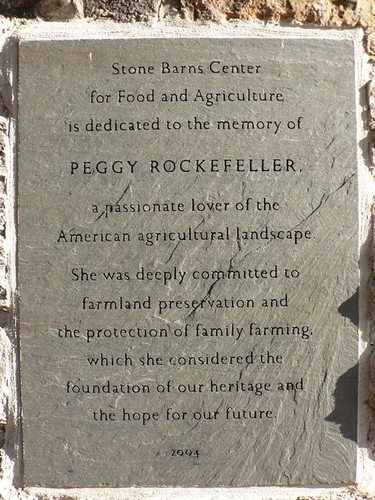
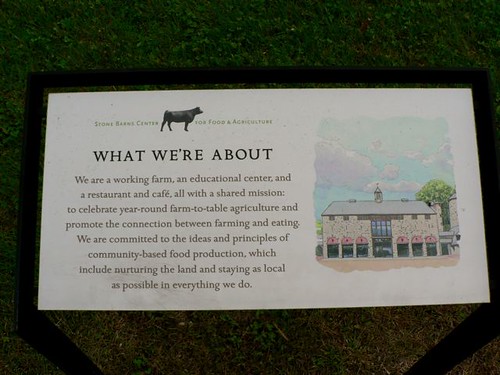
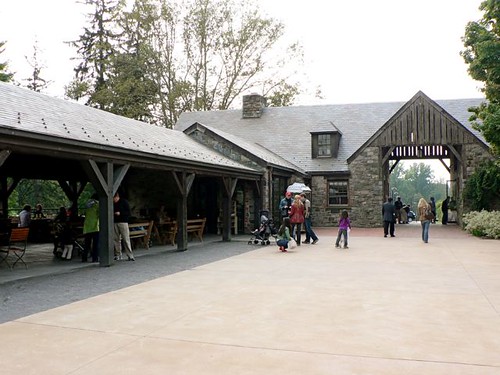
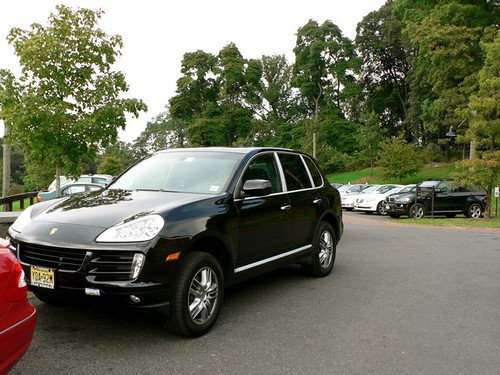
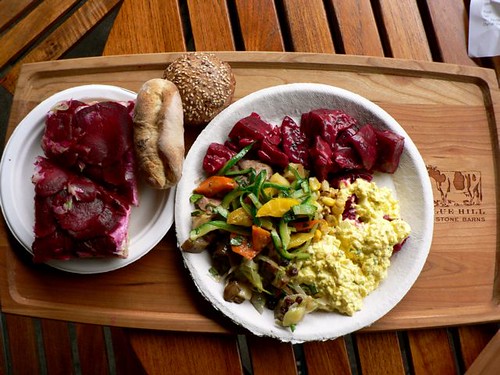

If the Museum of Natural History were to continue its agriculture exhibit in a linear fashion true to Michael Pollans views, it would go from Primeavel Forest Dweller to the 1950s, through to the horrors of industrial agriculture and on to Stone Barns and beyond to the full utopia. Food systems would be presented as an either/or dilemma, a binary choice between evil corporations or medium scale organic farms filled with re-educated workers. Or perhaps the Museum should just trash the whole section in favour of something far more interactive, diverse and inclusive? Perhaps the Museum should, more sensibly, rethink the whole idea that agriculture and food systems are in some way linear and instead represent them as mixed diverse systems that at times need of intervention to ensure peaceful coexistence. Where, industrial and local food are all deployed to ensure resilient food systems that provide both quantity and quality to all people at all budgets whether primeval forest dweller or New York foodie hipster.
For sure a week of wandering around New York and craving more green things gave me an understanding of why many Americans are increasingly radical about their food politics, but utopians and binaries always create the need for radical opposition.



